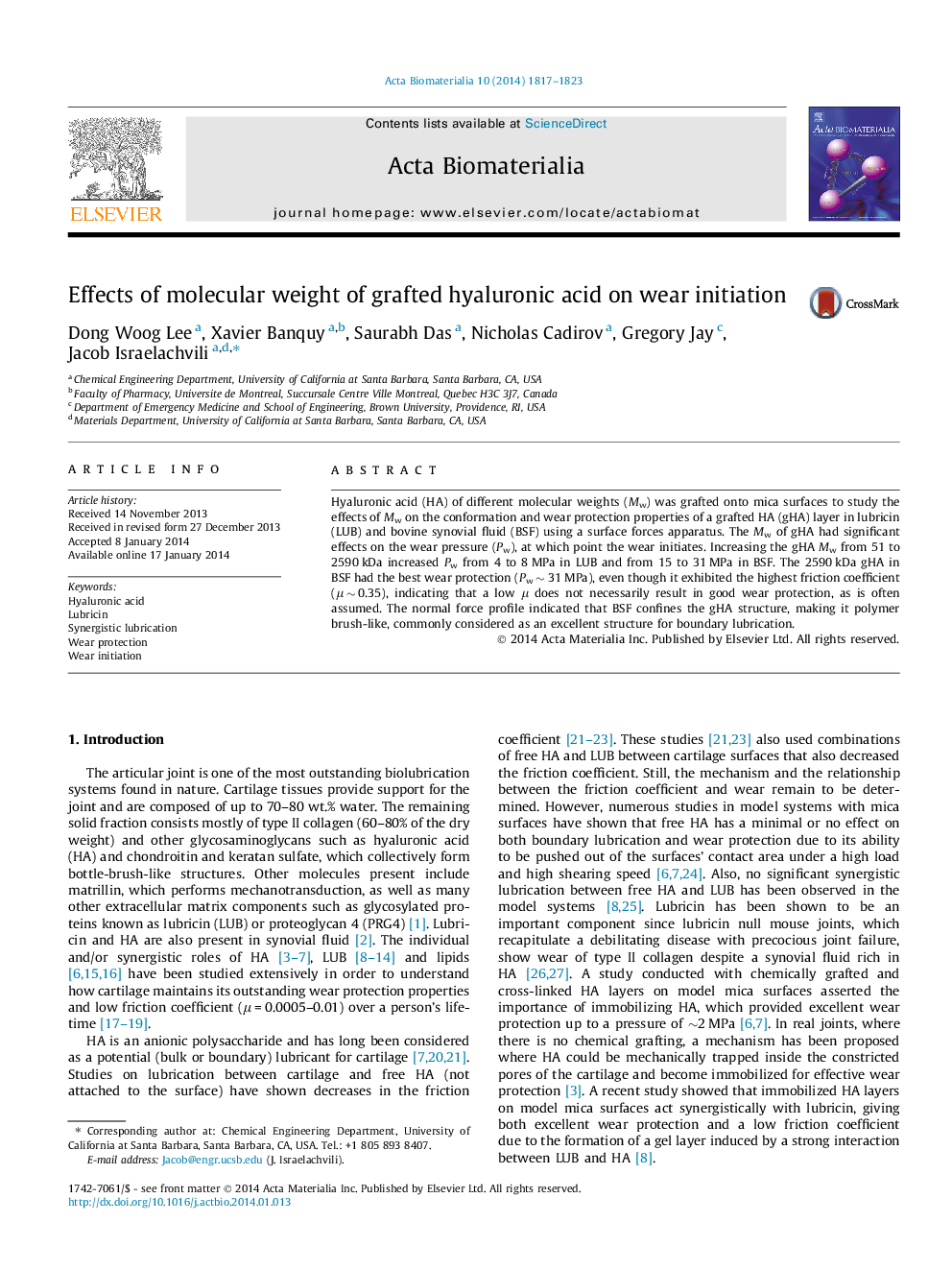| Article ID | Journal | Published Year | Pages | File Type |
|---|---|---|---|---|
| 10159174 | Acta Biomaterialia | 2014 | 7 Pages |
Abstract
Hyaluronic acid (HA) of different molecular weights (Mw) was grafted onto mica surfaces to study the effects of Mw on the conformation and wear protection properties of a grafted HA (gHA) layer in lubricin (LUB) and bovine synovial fluid (BSF) using a surface forces apparatus. The Mw of gHA had significant effects on the wear pressure (Pw), at which point the wear initiates. Increasing the gHA Mw from 51 to 2590 kDa increased Pw from 4 to 8 MPa in LUB and from 15 to 31 MPa in BSF. The 2590 kDa gHA in BSF had the best wear protection (Pw â¼Â 31 MPa), even though it exhibited the highest friction coefficient (μ â¼Â 0.35), indicating that a low μ does not necessarily result in good wear protection, as is often assumed. The normal force profile indicated that BSF confines the gHA structure, making it polymer brush-like, commonly considered as an excellent structure for boundary lubrication.
Related Topics
Physical Sciences and Engineering
Chemical Engineering
Bioengineering
Authors
Dong Woog Lee, Xavier Banquy, Saurabh Das, Nicholas Cadirov, Gregory Jay, Jacob Israelachvili,
